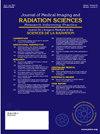核磁共振成像研究放射技师在临床研究中的作用:英国视角下的责任、挑战和未来方向
IF 1.3
Q3 RADIOLOGY, NUCLEAR MEDICINE & MEDICAL IMAGING
Journal of Medical Imaging and Radiation Sciences
Pub Date : 2025-04-15
DOI:10.1016/j.jmir.2025.101884
引用次数: 0
摘要
在过去的十年中,MRI研究放射技师的角色已经发生了转变,从专注于诊断成像发展到积极参与临床研究。MRI研究放射技师现在从事方案制定,参与者安全管理和新兴技术,突出了他们在多学科研究团队中的重要性。目的:本专业综述探讨了英国MRI研究放射技师的责任、挑战和未来方向,重点关注他们在临床研究环境中的角色演变。方法采用叙述性综述方法综合同行评议文献、专业指南和专家意见。调查结果分为三个主题:核心责任、挑战和障碍,以及未来职业发展的机会。smri研究放射技师在管理参与者安全、伦理考虑和先进成像技术方面发挥着至关重要的作用。诸如资源限制、跨学科沟通差距和伦理困境(例如,偶然发现)等挑战对有效实践构成了障碍。未来的机会包括整合人工智能、建立标准化的专业框架和扩大全球合作。加强在先进成像技术、研究伦理和管理方面的培训对于他们继续为研究和临床实践做出贡献也至关重要。本综述强调了MRI研究放射技师在推进临床研究和参与者护理方面的关键和不断发展的作用。通过应对当前的挑战和利用新出现的机会,MRI研究放射技师可以保持在技术创新的前沿,并增强他们对医疗保健研究和交付的影响。本文章由计算机程序翻译,如有差异,请以英文原文为准。
The role of MRI research radiographers in clinical research: Responsibilities, challenges, and future directions a UK perspective
Background
The role of MRI research radiographers has transformed over the past decade, evolving from a focus on diagnostic imaging to active contributions in clinical research. MRI research radiographers now engage in protocol development, participant safety management, and emerging technologies, highlighting their importance in multidisciplinary research teams.
Aim
This professional review explores the responsibilities, challenges, and future directions of MRI research radiographers in the UK, with a focus on their evolving role in clinical research settings.
Methods
A narrative review methodology was utilised to synthesise peer-reviewed literature, professional guidelines, and expert opinions. Findings were categorised into three main themes: core responsibilities, challenges and barriers, and opportunities for future professional growth.
Key findings
MRI research radiographers play a crucial role in managing participant safety, ethical considerations, and advanced imaging technologies. Challenges such as resource constraints, interdisciplinary communication gaps, and ethical dilemmas (e.g., incidental findings) pose barriers to effective practice. Future opportunities include integrating artificial intelligence, establishing standardised professional frameworks, and expanding global collaborations. Enhanced training in advanced imaging techniques, research ethics, and governance is also essential for their continued contribution to both research and clinical practice.
Conclusion
This review highlights the critical and evolving role of MRI research radiographers in advancing clinical research and participant care. By addressing current challenges and leveraging emerging opportunities, MRI research radiographers can remain at the forefront of technological innovation and enhance their impact on healthcare research and delivery.
求助全文
通过发布文献求助,成功后即可免费获取论文全文。
去求助
来源期刊

Journal of Medical Imaging and Radiation Sciences
RADIOLOGY, NUCLEAR MEDICINE & MEDICAL IMAGING-
CiteScore
2.30
自引率
11.10%
发文量
231
审稿时长
53 days
期刊介绍:
Journal of Medical Imaging and Radiation Sciences is the official peer-reviewed journal of the Canadian Association of Medical Radiation Technologists. This journal is published four times a year and is circulated to approximately 11,000 medical radiation technologists, libraries and radiology departments throughout Canada, the United States and overseas. The Journal publishes articles on recent research, new technology and techniques, professional practices, technologists viewpoints as well as relevant book reviews.
 求助内容:
求助内容: 应助结果提醒方式:
应助结果提醒方式:


